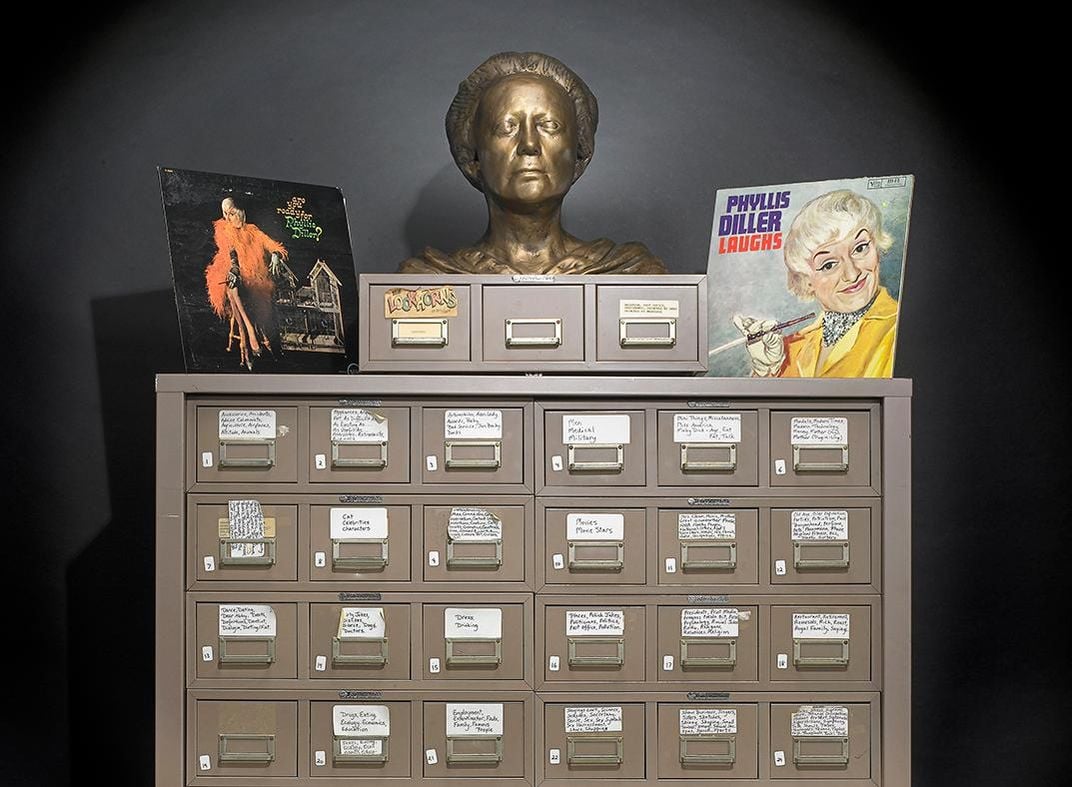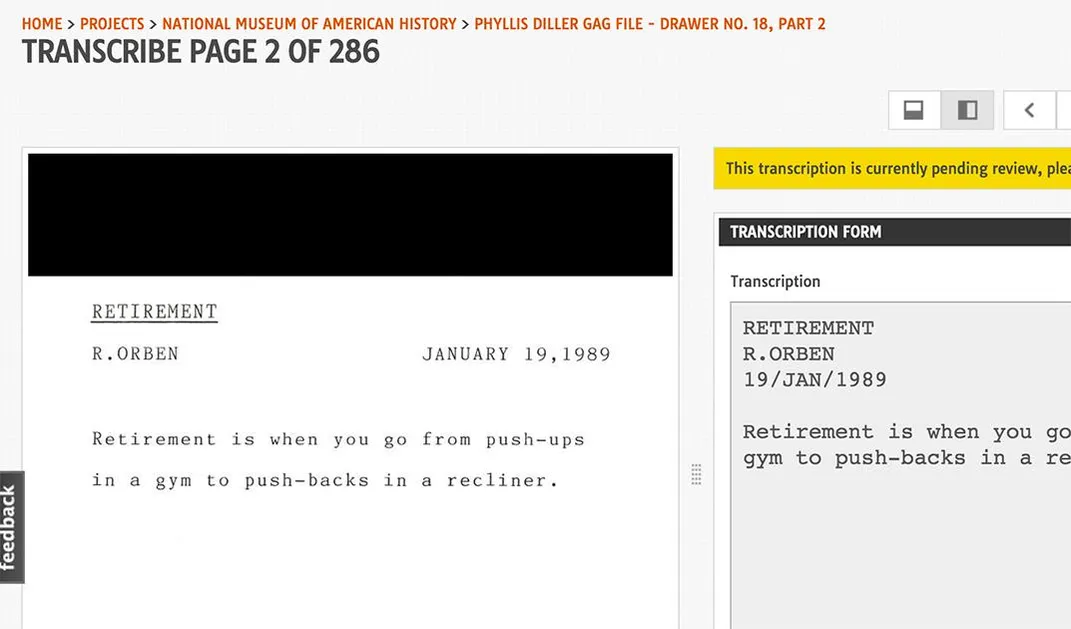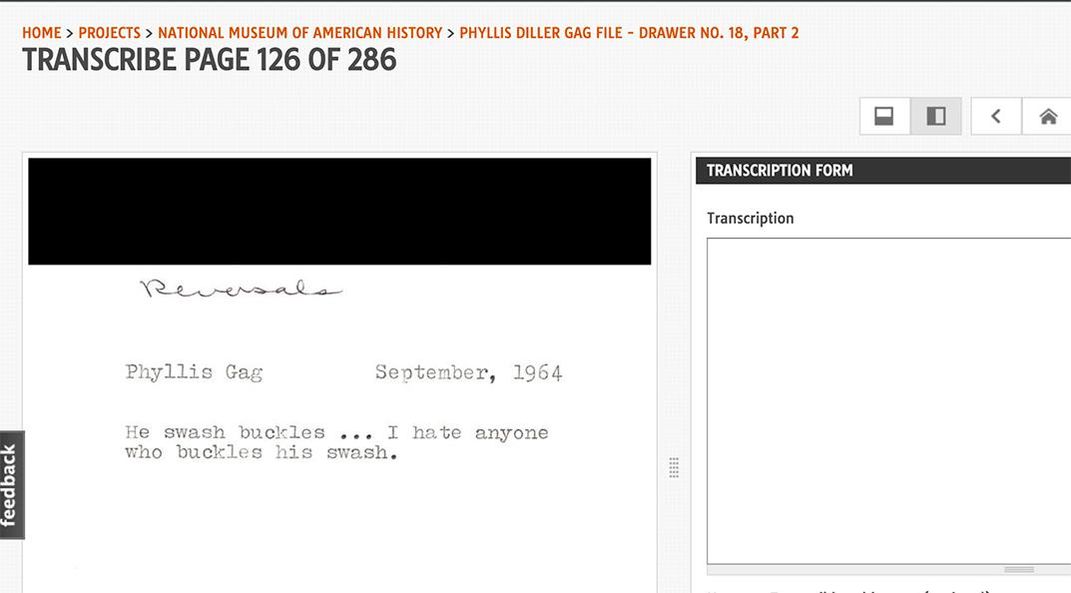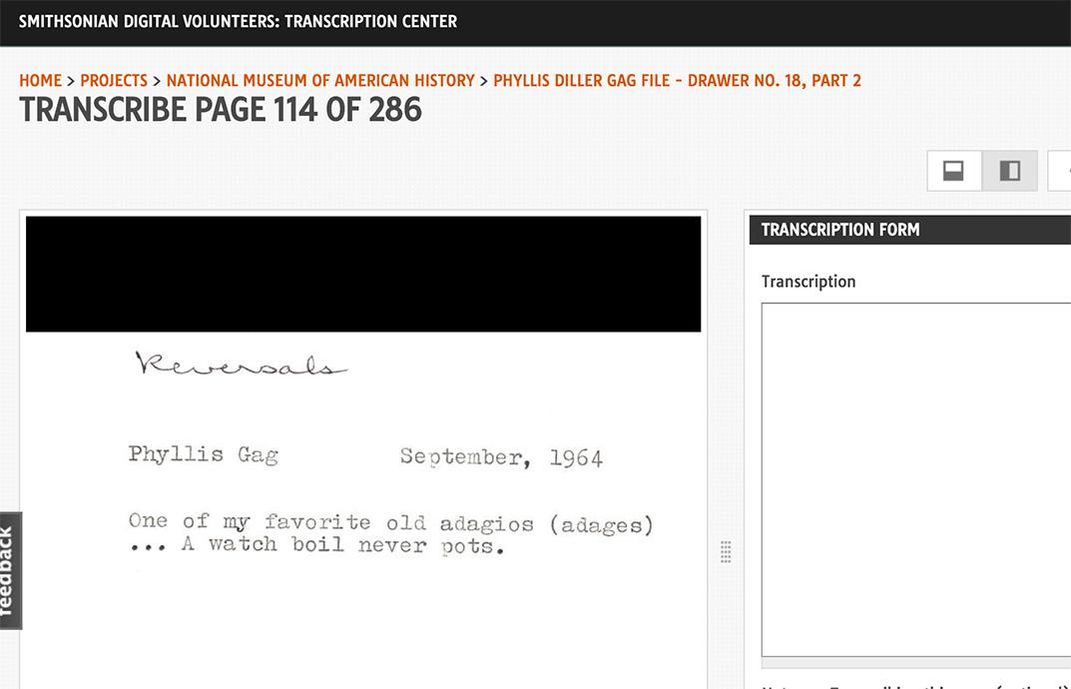How Many Volunteers Does It Take to Transcribe Phyllis Diller’s 53,000 Jokes?
Playing around in this massive joke file is like a crash course in brash humor
/https://tf-cmsv2-smithsonianmag-media.s3.amazonaws.com/filer/94/95/9495cde8-9a8a-4473-b96e-a22ba8ff7b0d/et201028667web.jpg)
When it comes to transcribing historical texts as a Smithsonian Digital Volunteer, some projects can be more entertaining than others.
Not that transcribing specimen labels for 44,000 bumblebees or variations of tropical pollen can’t be interesting, in their way.
But what about the joke files of Phyllis Diller?
The wild-haired, groundbreaking 20th-century comic may not have had “a million of ‘em,” as some in her profession boasted. But she had at least 53,000 gags, typed out on individual 3x5 cards, in categories ranging from accessories to washing.
They were typed and meticulously filed into 48 drawers of a large, beige Steelmaster cabinet on wheels that she donated, along with a few of her wilder getups and wigs to the Smithsonian in 2003—less than a decade before her death in 2012 at 95.
The Smithsonian Transcription Center began in 2013, relying on volunteers to help transcribe field notes, diaries, levers, logbooks and specimen labels from eight various Smithsonian museums and archives, some 7,500 volunteers have signed up to transcribe more than 225,000 pages.
But when Diller’s jokes came up for transcription last week, “they are going like gangbusters,” says Meghan Ferriter, project coordinator. “I think we actually gained about 115 new volunteers in one day.”

The volunteers do it all online—typing out items that have been photographed and digitized. That way the information can be more easily searched, Ferriter says. “You can search the categories that Phyllis Diller used, you could search the content of jokes, or even look at the difference between jokes she created in the 1970s versus the 1980s.”
And transcribers might get a chuckle along the way as well.
Four gags from her file on the exaggerated mother-in-law character she also referred to as Moby Dick, for example, centered on weight:
She has calves only a cow could love.
Her idea of a continental breakfast is to eat a continent.
She sat on a rowing machine and it sank
What have you got in my size?” “The Freight elevator.
Most of the gags, written from the 1960s to the 1980s, are just like that—one per card. But a few that are more involved sometimes take a few cards to tell.
Volunteers, who range in age from students to retirees and live all over the world, have been relied upon for a number of tasks so far at the Transcription Center, Ferriter says. “But certainly the Phyllis Diller cards appear to be resonating deeply with volunteers who coming to participate in this project now.”
The Diller cards came out during Women’s History Month to highlight her contributions to comedy. Transcribing them, Ferriter says, “is also an opportunity to allow the public to interact with a collection that is not available on view right now.”
Ferrier says the center is grateful for any transcribing a volunteer wants to do.
“We welcome everything from one line to 100 lines,” she says, whether it’s “spending two minutes working with us, or two hours, or two weeks, or two years—and we do have volunteers who have been working with us for two years.”
Judging how quickly the files are being transcribed, getting all 53,000 cards completed may only take a matter of months. “The pace of transcription is going very quickly so far.”
And once a volunteer has transcribed enough jokes, maybe they will want to move to something else.
“The benefit of using Smithsonian Transcription Center is that you can work a few pages of Phyllis Diller cards, and then you can go and transcribe pollen cards from the Smithsonian Tropical Research Institute,” Ferriter says. “It’s a very flexible experience.”
/https://tf-cmsv2-smithsonianmag-media.s3.amazonaws.com/accounts/headshot/RogerCatlin_thumbnail.png)





/https://tf-cmsv2-smithsonianmag-media.s3.amazonaws.com/accounts/headshot/RogerCatlin_thumbnail.png)